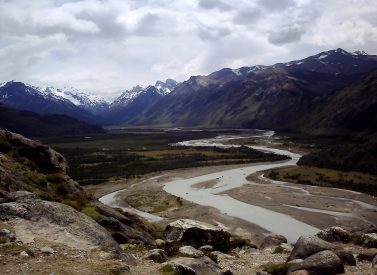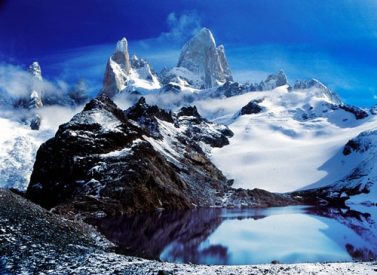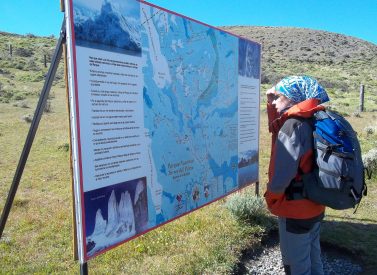
Fitz Roy M Trek, Argentina
The Fitz Roy M trek is the big hike for all walking fans to try when visiting Chalten.
This walk – named the ‘M’ for its route – takes in the best of Fitzroy National Park in Argentina, Patagonia.
You hike to Fitz Roy and Cerro Torre, walk on glaciers and explore the Los Glaciares National Park.
There’s also the chance to bag a Patagonia peak, Cerro Madsen, an exhilarating climb.
More on Fitz Roy M trek
The Fitz Roy M walk — so-called for the M shape the trek follows — showcases the very best of Fitzroy National Park in Argentina, Patagonia.
Our version of the Fitz Roy M trek includes Río Electrico, Laguna Torre and the beautiful Cerro Torre mountain, and Laguna de Los Tres for a view of the entire Fitz Roy range.
The Fitz Roy M — also called the Glaciers Trail — is an unforgettable experience, combining adventure with fully-equipped campsites and refugios.
Trip Highlights
Print Share Download as PDF-
Full Fitz Roy M trek in Los Glaciares National Park.
-
Camp in remote spots, away from the crowds, nestled among the mountains.
-
Spectacular views over the Ice Cap, Cerro Torre and Mount Fitz Roy.
-
Join a group or design your own itinerary with our flexible approach.
Our trip was really wonderful.
I thoroughly enjoyed every minute and I can honestly say that there weren't any low points.
A. McGregor, Patagonia
Full Itinerary
Day 1: Arrive El Chaltén, transfer to hosteria
Make your own way to El Chaltén, or let us organise the buses to this Patagonia town that serves as the gateway to Los Glaciares National Park.
We’ll book a private room for you in El Chaltén, and you have free time to explore the town.
Day 2: Rio Electrico — Piedra Del Fraile Camp (B,L,D)
We leave El Chalten today and take the short drive, with our guide, to the Rio Electrico trailhead.
We walk up the Rio Electrico towards our camp at Refugio Piedra del Fraile.
Those with energy can walk up to Laguna Electrico, with its magnificent views.
Hiking time: 4-6 hours
Distance: 8 miles / 13 km
Elevation gain: +100m/330ft
Day 3: Refugio Piedra del Fraile - Mirador Glaciar Piedras Blancas - Poincenot Campsite (B,L,D)
We leave Refugio Piedra del Fraile and begin the Fitz Roy M in earnest today.
We head south today, walking towards the stunning Mirador Glaciar Piedras Blancas. The glacier, mountains, and ice bergs make for fantastic photos.
The path continues south and to our camp for the evening, the Poincenot Campsite.
Hiking time: 4-5 hours
Distance: 6.2 miles / 10 km
Elevation gain: Negligible
Day 4: Laguna de los Tres - Poincenot Campsite - Thorwood Campsite (B,L,D)
We climb to Laguna de Los Tres, the emblematic hike in the region. The viewpoint of the entire Fitz Roy range from Laguna de Los Tres is something to behold.
We relax with our boxed lunch at the viewpoint, with plenty of time to take photographs and enjoy this unique area. Our return to camp is via the path on which we arrived, then south towards Thorwood Camp.
Our path will skirt the Lagunas Madre e Hija, which afford incredible panoramic viewpoints. It takes around three hours between camps.
Cerro Madsen
Those looking for a longer walking day can add the fabulous ascent of Cerro Madsen (extra cost, weather dependent, crampons, helmet, and harness included).
We’ll need to walk with crampons over rock and snow. Your guide may rope the group up, depending on conditions, and their decision is final.
The hike takes about three hours in total to a summit with fantastic views of lagoons, glaciers, and, of course, Mont Fitz Roy. There is a short but exhilarating (grade 4) rock climb to reach the top.
We reach our camp to regain strength for tomorrow.
Hiking time: 4-5 hours (without Cerro Madsen)
Distance: 6.2 miles / 10 km
Elevation gain: 250m / 820 feet
Day 5: Laguna Torre - El Chalten (B,L)
Following a filling breakfast, the Laguna Torre Trail is our starting point, following the Fitz Roy River valley and its meandering watercourse.
First, we head to the moraine of Laguna Torre, where you’ll enjoy the boxed lunch you brought along with fantastic views of glaciers, mountains, and forests.
The Cerro Solo mountain frames our walk out as we head back to El Chalten.
Hiking time: 5-6 hours
Distance: 7 miles / 11 km
Elevation gain: 250m / 820 feet
Day 6: Tour ends (B)
After breakfast, catch the bus (not included) back to El Calafate.
Or you can take an optional trip to Glacier Viedma by bus and then boat and experience a walk on the glacier (not included). Return to town in time to catch an evening bus to El Calafate (please let us know if you would like this organised for you), and the tour ends.
Prices From $3,120 / £2,537 per person
What's Included?
English-speaking trek guide (days 2 to 5); Cook and dining tent; All group camping and trip equipment; All meals and water on trek; Refuigo and camping accommodation (sleeping bag and mattress; Chalten accommodation (twin/double); Private transport to and from the trek, meals as listed.
What's Not Included?
Flights (we can look for these), travel insurance; Items of a personal nature; Optional trips; Tips, meals not listed, alcoholic or soft drinks, porters to carry personal kit, El Calafate services, bus El Calafate-Chalten
Accommodation
We camp at established camps and refugios within the park. There are spacious, two-person tents included. Guides cook your meals.
Tour Staff
We employ local, bilingual English-speaking and qualified guides for this trek.
Most have worked for many years in the area and know the park intimately.
Meals
We can cater for almost all dietary requirements – please enquire in advance.
The eco-camp offers plentiful meals with an emphasis on local produce, recipes and foods.
While out trekking, you usually wake early, around 07.00, and have a filling breakfast at camp. This is usually a mix of hot drinks, cereals, toast, eggs etc.
After breakfast, packs are prepared and your guide will explain the day’s walk, and you typically walk 3-4 hours in the morning before lunch, with a short or break or two en route.
Lunch, while out walking, will be sandwiches, energy bars, biscuits etc. Please bring some favourite snacks of your own, too.
After an hour or so for lunch – depending on weather conditions – you will continue your walk, usually 1-3 hours more, although some days are shorter or longer than others, and then relax before dinner at camp.
After eating, you can choose to socialise with team members, relax in your tent or take in the views.
It can get cold very soon after sunset (albeit days are often very long in southern Patagonia’s trekking season), so most people will fall asleep early and then rise early the next day, helping to conserve energy.
Activity Level
We have qualified this as a moderate trek.
There is no high altitude to worry about, the main challenge is the changeable weather in what is a remote area, and several consecutive days of trekking for 5-7 hours.
You need to have a good level of fitness for the trip, as the fitter you are, the more you will enjoy it.
Those with no previous trekking experience can trek this trek, although experience of hiking is beneficial.
The trip is open to anyone with a positive attitude who wants to walk in a stunning and remote part of the Patagonian Andes.
Practical Information
Introduction to Patagonia
For most people, Patagonia evokes a vast, windblown plateau, jagged mountains and the life of the gauchos.
The steppe that occupies much of southern South America is only one aspect of a magical region, jam-packed with amazing and contrasting landscapes.
Patagonia (latitudes 40°-55°, approximately) embraces a vast portion of southern Chile and Argentina, from the Rio Colorado in the north, to Tierra del Fuego in the south.
For convenience, we have divided the region into three zones: the Lakes District of northern Patagonian, central Patagonia and southern Patagonia.
Geography of Patagonia
Southern Patagonia (latitudes 49° to 55°), encompassing the southern Andes of Chile and Argentina plus Tierra del Fuego, has an altogether more vertical aspect than the rest of Patagonia.
As the continent tapers towards its southern point, the Andes take on new characteristics and offer some truly impressive panoramas.
Much of southern Patagonia is characterized by virgin landscapes where man’s hand has either not been present or, because of the scale of the landscapes, goes almost unnoticed. To the west of the semi-arid Patagonian plateau, mile-high granite spires – e.g. Cerro Torre and Fitzroy in Argentina and the Torres and Cuernos del Paine in Chile – rise abruptly from the Andean foothills, while vast blue glaciers, fringed by southern beech forest, gouge out thevalleys below.
At the heart of these magnificent landscapes lies the South Patagonian Ice Field, an utterly remote icy wilderness spanning hundreds of kilometers, whose glaciers – including the Perito Moreno and Upsala – are tens of kilometres long by severalkilometers wide.
Also characteristic of the southern Patagonian Andes are its turquoise, iceberg-filled lakes. To the west lies the southern portion of the Chilean Archipelago, comprising snow-capped islands and fjords.
Across the Magellan Straits from mainland Patagonia lies Tierra del Fuego which, like the rest of Patagonia, is divided between Argentina and Chile.
The north and east of Tierra del Fuego is flat, but flanking the Beagle Channel in the south, the tail end of the Andes provide very dramatic mountain scenery.
The Lake District (latitudes 40° to 45°) or the Araucania, is a region of dramatic conical volcanoes, evergreen, high-canopy forests and, of course, lakes.
It straddles the Chile-Argentine border, and also takes in Chiloe island, in the extreme north of the Chilean Archipelago. This region stretches from Temuco in the north to Chiloe in the south.
Central Patagonia (latitudes 45 to 49) is one of South America’s best-kept secrets. The vast wilderness area can be divided in two:
- The dry band of Andean foothills and wind-blown plateau lying on the Argentine side of the Andes. This remote area is traversed north to south by a gravel highway known as the Ruta Cuarenta (Highway 40).
- The Chilean portion to the west of the Andean watershed, often referred to as the Careterra Austral (after the little-used gravel highway that crosses it from north to south).
This huge region, embracing the sparsely-inhabited southern Araucaria and Aisén Region, features temperate rainforests, snow-peaks (often extinct volcanoes), lakes and, to the west, the Chilean Archipelago: a labyrinth of fjords and mountain-islands. This, the Chilean portion of central Patagonia, boasts the northernmost of Patagonia’s many giant, sea-level glaciers.
The San Raphael Glacier, probably this region’s most famous landmark, is an immense hanging glacier whose seracs calve into an iceberg-filled lagoon.
Find out more about Patagonia with our blog about its wildlife.
Weather
Patagonia weather changes as quickly as the wind sometimes blows.
Summer (Nov-March) see temperatures reach up to 20°C, when glorious light pours over the region for up to 18 hours. This is the best time to visit, nevertheless, spring and summer is also when the central and southern Patagonian regions sometimes get buffeted by strong, westerly winds.
Summer days in national parks can also bring sunny, windless conditions, and you may well find yourself hiking in shorts and t-shirt. Afternoons in Los Glaciares can be warm with lots of sunshine. (Note: Patagonian UV rays are very strong).
But because of the fickle – and localised – nature of the climate here, take nothing for granted. In a single day, all four seasons might be experienced, including a biting, wind-induced cold. It has been known to snow in camps in summer!
The in winter (May-Sept) temperatures typically range from -2°C in the winter, and there is only 6-8 hours of daylight. Winds tend to die down.
More information
In general, the further south you go, the cooler it gets and the further west you go – towards the Andes and Pacific coast – the wetter and less predictable the weather is. The further east – towards and across the Patagonian plateau – the drier and more stable.
On the South Patagonian Ice Field (average height, 1,500 metres), the appearance of lenticular clouds – signifying changing conditions – can translate into extreme winds (up to 150 kmh) and heavy snowfall. Here, summer pre-dawn temperatures commonly reach -20°C, with wind chill lowering temperatures even more. However, on sunny, windless summer days, you might get away with wearing just a couple of thin layers.
In Peninsula Valdes, the city of Puerto Madryn and the capital Trelew are all located in the province of Chubut, on the shores of three gulfs: San Matias, San Jose, and Nuevo. This area features a peculiar climate because of the effect created by the Atlantic Ocean. Although it does not rain much in the region on an annual basis, summers are usually mild, and the temperature sometimes gets very hot (touching 30ºC) and then eases off in the evening. The area does get very windy at times, especially on the peninsula, and warm and water/windproof clothing is recommended.
If you head to Ushuaia, due to its extreme southern location, temperatures may remain chilly during summer (Oct-March) the use of plenty of warm layers of clothing. Winter and Antarctic visits will require extreme clothing.
Kit list
Good kit is vital for every trip.
Book with Andean Trails and get 15% off Páramo’s fantastic ethical and high performance outdoor gear.
Overview
When planning for the varied climatic conditions encountered in Patagonia, layering is the most practical and versatile clothing system. It’s worth remembering that our clothing keeps us warm by retaining and isolating the heat we ourselves create.
To best maintain body heat, several layers of lightweight, warm and quick-drying clothing are far more efficient than one or two thick layers. Layers should have the following qualities:
- Breathability (able to wick away the humidity produced by sweat):
- Isolation (able to keep in the warm air our body produces); and
- Impermeability (able to impede the passing of wind and water).
First (base) layer: This layer wicks the sweat away from our skin, thus helping keep the body dry and warm. To this end, synthetic fabrics such as polypropylene should be used.
Mid layers: These isolating layers should also be synthetic (e.g. the known polar linings such as polartec or windblock, which are light and insulate twice as well as wool). Very important layers for retaining body heat.
Outer layer / shell: Finally, the vital layer which protects us from climatic adversities. A breathable, wind-proof and waterproof anorak, such as Goretex.
Give plenty of thought to kit selection, and try to keep weight down.
Below is a more detailed kit list.
Detailed kit list
- Sleeping bag liner (optional), for hygiene purposes.
- 2 pairs synthetic inner socks (e.g. polypropylene, thermastat, coolmax) and 2 pairs thick loop-stitch/wool socks for cold.
- Trekking boots – should be well broken-in, waterproof and provide good ankle support.
- Trainers/sandals for city-wear, evenings at lower camps & river crossings.
- Base layer leggings (1 pair).
- Thick fleece leggings (or salopettes) (1 pair).
- Goretex-type over-trousers (or salopettes) (1 pair).
- Gaiters (optional).
- Trekking trousers (2 pairs).
- Shorts – wear sparingly in early stages at altitude, as sun burns.
- Thermal base layer shirts (2).
- Microfleece mid-layer shirt (1).
- Shirt/t-shirt 1 or 2 for lower altitudes. Long-sleeved, collared shirt protects against sun
- Fleece jacket or similar (1).
- Warm jacket (down or synthetic). For camp and upper slopes.
- Waterproof Goretex-type jacket.
- Broad-brimmed sunhat, essential.
- Warm hat, fleece or wool. (N.B. Up to 30% of body heat can be lost through the head).
- Sunglasses with UV filter.
- Scarf for cold.
- Bandanna – to protect neck from strong sun.
- Light inner gloves
- Warm gloves, e.g. fleece, and outer waterproof gloves or mittens (1 pair)
- Mittens allow you to keep the fingers together, and better conserve heat (though they also make it difficult to perform certain tasks).
- Daypack (at least 30-50 litres). Comfortable and with waterproof lining or cover.
- Large rucksack or suitcase.
- Pair of telescopic trekking poles (optional).
- Water bottle (2 litres approx.) & purification tablets.
- Personal first-aid kit to include: painkillers, plasters (band-aids), moleskin, anti-biotic cream, after-bite (tiger balm), anti-diarrhoea tablets, throat lozenges, re-hydration salts & personal medication.
- Insect repellent.
- Towel & wash-kit.
- Wet Wipes/antiseptic hand-wash cream.
- Toilet paper (1)
- Sunscreen (factor 50+) and lip salve.
- Head-lamp (plus spare bulb and batteries).
- Penknife.
- Plastic bags – ‘Zip-loc’ & tough bin liners.
- Camera and film / memory cards (take at least twice the amount you think you will need!).
- Book, e-book, mp3 player/iPod or other for free time.
- Binoculars.
- Spanish/English phrasebook.
- Extra snacks i.e. cereal bars or favourite chocolate bars.
All non-personal trekking / camping gear e.g. tents, cutlery etc is provided.
Miscellaneous others
- Money belt.
- Passport.
- U.S. dollars cash, mixed-denomination notes, undamaged and unmarked.
- ATM cash/credit card.
- Personal & medical insurance certificates.
ATOL holiday protection
Andean Trails has 25 years of experience of putting together the best South America holidays.
We pay a fee to the CAA for every licensable passenger we book since we hold an Air Travel Organiser’s Licence granted by the Civil Aviation Authority. In the unlikely event of our insolvency, the CAA will ensure that you are not stranded abroad and will arrange to refund any money you have paid to us for an advance booking.
We also offer ATOL (Civil Aviation Authority) protected holidays to give our customers peace of mind when booking and travelling.
When you buy an ATOL protected air holiday package from Andean Trails Ltd you will receive a Confirmation Invoice from us confirming your arrangements and your protection under our Air Travel Organiser’s Licence number 6275.
You can read more about ATOL, who is covered and what protections you have if not ATOL-covered, on our ATOL page.
What is ATOL?
The CAA’s ATOL scheme offers protection to your money and your holiday if you book with us. Not everybody is covered (see ‘Who is covered?’ for more), as you must purchase an ‘air package holiday’ with Andean Trails to be protected.
And ‘air package holiday’ is defined as including a flight and some ground services (hotel, transfer, trek etc). This is also known as an ‘ATOL-protected holiday’.
Who is covered?
To be covered by ATOL, you must book a flight and some ground services with us and be from the UK. If you are from the UK and only book ground services and no flights, you are not covered by ATOL (see below for more on how non-ATOL clients are covered).
If you are outside the UK and buy flights with us, you will be ATOL protected IF any of the flights booked with Andean Trails touches/stops in the UK at any point during your holiday package booked with us.
If you buy your flights elsewhere, please check with that agent if you are ATOL protected. Be careful with online flight purchases and make sure you know what protection you have, if any, before paying for flights.
Not all holiday or travel services offered and sold by us will be protected by the ATOL scheme. Please ask us to confirm what protection may apply to your booking.
For land only holidays not involving any air travel, in accordance with “The Package Travel, Package Holidays and Package Tours Regulations 1992”, all UK passengers booking with Andean Trails Ltd. are fully protected for the initial deposit and subsequently the balance of all money paid to us, arising from cancellation or curtailment of travel arrangements due to the insolvency of Andean Trails.
I’m not ATOL covered, what protection do I have?
If you are not ATOL covered, any payments you make to us go to a Trust account.
We can only access this money once your tour has been completed, meaning that if anything happens to Andean Trails Limited while you are on holiday, then your money is secure and you can either complete the trip or be able to make it home.
If you pay for your holiday with a credit card, some offer payment protection – please check with your cardholder.
You also should have cancellation protection written into your insurance (which we recommend you have at the time of booking) in case you need to cancel.
Argentine Patagonia
Argentine Patagonia, the southern half of Argentina, is a remote, wind swept land of plains, mountains, lakes and glaciers.
The main airport is at El Calafate which is the gateway to Los Glaciares National Park.
Nearby is the mighty Perito Moreno glacier where you have the opportunity to get up close to the ice on one of the many walkways or on a boat trip.
El Chalten, a 3 1/2 hour drive from Calafate, is the trail head for treks in to the base of Cerro Torre, Fitzroy or for the more intrepid, on to the South Patagonian ice-cap.
Ushuaia, on the Beagle channel, is the southern most city of Argentina. Ushuaia is fascinating for historical interest, is rich in wildlife and is departure port for many Antarctic cruises
Chilean Patagonia
Chilean Patagonia is a pristine wilderness of fjords, glaciers, plains, mountains and forests.
Southern Patagonia’s main attraction is the Torres del Paine National park. The granite spires attract many visitors to what some have called the 8th Wonder of the World. The park is a trekkers paradise with two classic treks, the Paine W and the Paine Circuit.
Northern Patagonia, the Aysen region, is one of the least populated parts of the country and is blessed with spectacular countryside.
The main airport is Balmaceda near the city of Coyhaique and must see places include Lake General Carrera and the Marble Caves, The San Rafael Glacier, the Quelat Hanging Glacier as well as driving the Austral Road.
The Futaleufu River is a must for white water enthusiasts.
The region also offers great horseback opportunities as well as kayaking ones. Nature enthusiasts can admire the impressive scenery, imposing glaciers and fascinating wildlife and flora.
Available Dates

Dates & Prices
Prices From $3,120 / £2,537 per person
2024-25 price
Price based on 2 people travelling together.
Cerro Madsen ascent: USD 250pp (based on two people ascending).
Please enquire about private departures
Can’t find what you’re looking for? Get in Touch
+44 (0)131 378 5593
+44 (0)131 554 6025





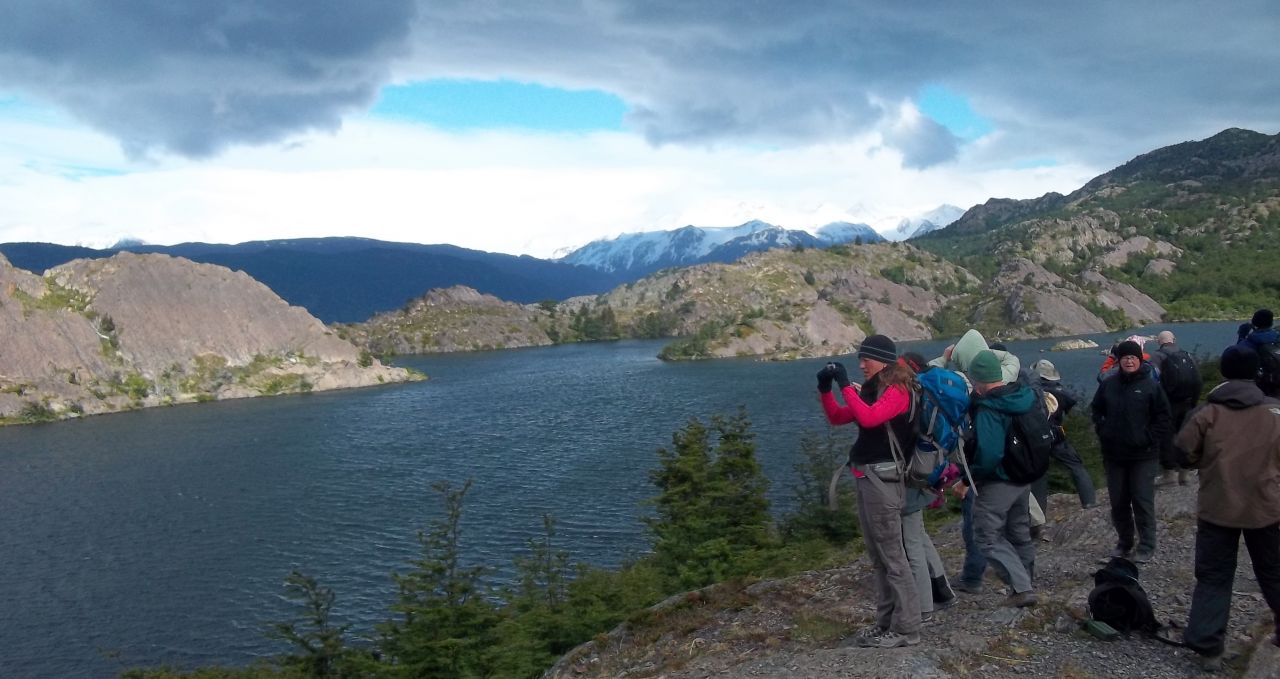




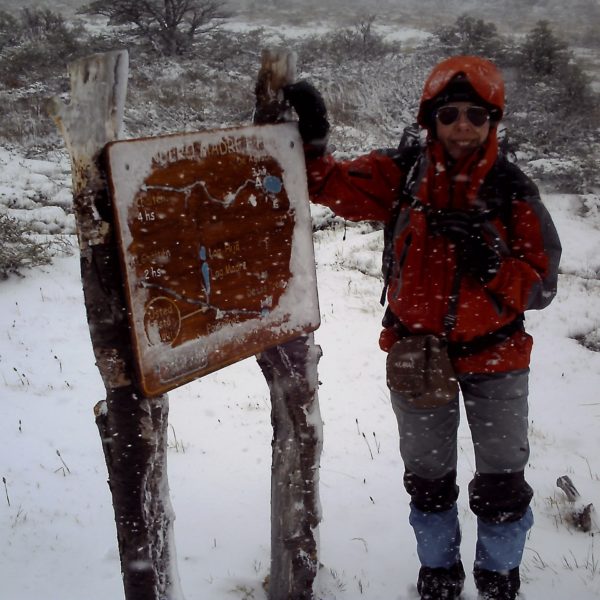

 a Tailor Made Tour
a Tailor Made Tour 
 a Group Tour
a Group Tour 